Trek Itinerary
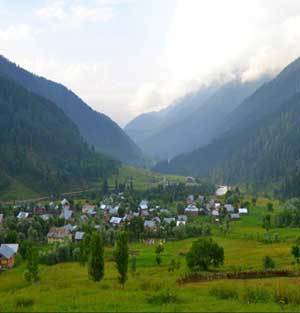
Arrive at Sringar (on your own)
Murawah will organise pick-up vehicles from Srinagar TRC – Tourist Reception Centre at 2:00pm.
The cost of transit from Srinagar to Aru will have to be borne by the trekkers.
The pickup is arranged in a Tata Sumo (or a similar vehicle)
The total cost of transportation one way is Rs. 2400 (to be shared among 5-6 people, i.e Rs. approx Rs.500 per head one way)
We are expected to reach Aru by 6:00pm.
Camp overnight at Aru
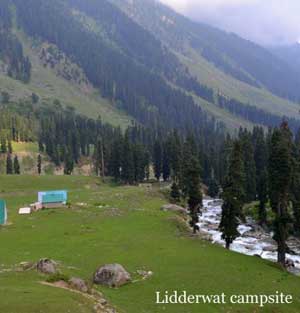
It is a gentle, but long climb from Aru to Lidderwat
You will cover a distance of 10 km in 6 hours with an altitude gain of 342 m
Look out for two clear streams and a wooden bridge half hour before Lidderwat
You will pass through Nandkei which is a cluster of Gujjar settlements across the Lidder river
Once you reach Lidderwat, you can explore the meadows and the clear streams that run through it. It is an absolutely delightful experience.
Camp for the night at Lidderwat
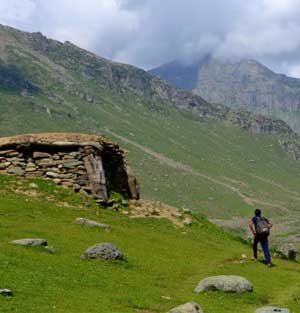
Gain an altitude of 480 m in 5 hours as you climb to Shekwas covering a distance of 6 km
The trail is mostly ascending with intermediate flat grounds and one river crossing en route
After passing through pine forests and some intermittent clearings you will reach wide sweeping grasslands that are formed from the merger of many valleys that converge here.
The trail climbs swiftly past a few Gujjar huts to the camping grounds of Shekhwas
Camp for the night at Shekhwas

It is a gentle climb to Tarsar through tall grasses, a few ridges and finally to the shore of the lake.
Tarsar is 5 km above Shekhwas and takes 4 hours with an altitude gain of 518 metres.
The turquoise blue water is surrounded by lush meadows and snow capped peaks – this campsite is truly heaven on earth.
Camp at Tarsar and move to Sundarsar the next morning.
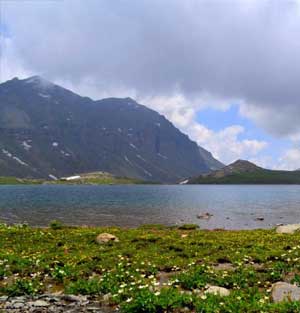
The trek to Sundersar covers a distance of 5 km in 5 hours with a pass crossing.
Some trekkers attempt a trek to Marsar, which is a closed lake set inside a cauldron with steep sides.
The trail is a steep ascent in the beginning, followed by a descent and then a final gentle ascent to Sundarsar
Sundarsar lake is not as large as Tarsar. Yet, the setting of the lake is just as beautiful.
Around the lake are long grassy stretches with little sprouting flowers of yellow, blue and white.
Sundarsar has big, flat streches that is a perfect camping spot.
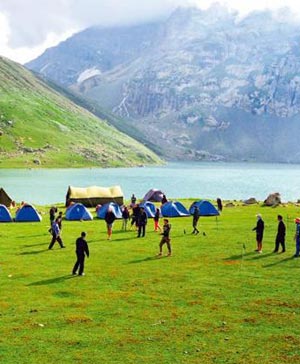
The trail initially is a climb to Marsar, which is at an altitude of 13,170 feet.
Explore the surrounding meadows, and finally descend to 11,000 feet.
The trek covers a distance of approximately 8 km in 6 hours.
The Sonamasti valley is a sharp drop of over 2,000 feet, over a series of grassy ledges.
Each of these ledges has a little stream that runs down from snow melts and falls down to the ledge below forming a clear pond, before sliding off the cliff as a waterfall.
The Sonamasti valley floor, again, is a breathtaking piece of nature’s art with small streams, brooks and green pastures.
Camp for the night at Sonamasti.
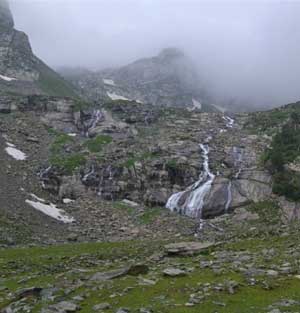
Descend 4500 feet, and 11 km from Sonamasti to Sumbal.
An early start will get you to Sumbal is about 5 hours. The trek ends at Sumbal.
It is a 2 hour drive from Sumbal to Srinagar.
Murawah will arrange vehicles to drop trekkers to Srinagar.
The cost will have to be borne by the trekkers and paid directly to the driver.
Fitness Required
Minimum Age:14 years
Past experience in trekking:
Useful but not essential
You need to be in good physical condition before the start of the trek. You should be able to jog 4 kms in 30 minutes before commencement of the trekking expedition. The air is thin and the conditions difficult. You also need to carry a backpack that is heavy weight. Your physical fitness is important for a successful completion of the trek. Training yourself to get to a jogging distance of 4 km under 30 minutes makes your lungs strong and gives it ability to process less air for more work.
Flexibility is the ability of muscles and tendons to relax and stretch easily. It determines the amount of movement your bones can make in any direction around joints such as shoulders, elbows, hips and knees. Stretching improves your posture and helps to prevent low back pain. Stretching your hamstrings, quadriceps, hip flexors and low back muscles regularly, promotes relaxation in the tissues reducing the strain on your back. On your trek, it is important that you arrive on the slopes with your muscles relaxed. Carrying a backpack, however light, can become a strain after a while. These exercises will help you to be in good shape before the trek.
Going to Tarsar Marsar? Want to make sure you're fit enough to thoroughly enjoy the experience?
Here's a simple,effective fitness plan that will help you be better prepared.
Things to get
Backpack (40-60 litres): Backpack with sturdy straps and supporting frame. Rain cover for backpack is essential.Daypack (20 litres): It is mandatory to carry a daypack if you choose to offload your backpack. If you decide to carry your backpack, day pack is not required.
Trekking shoes: No sports shoes. The shoes need to have soles with good grip and ankle support. Do not wear a new shoe to a trek. It might cause blisters. Before bringing them to trek, wear it for a week to make it softer. We recommend FORCLAZ 100, 500, and 600.
Socks (3 pairs): 2 cotton pairs, 2 woolen pairs (mostly to be used on campsites and while sleeping. Keep them dry.)
Trek pants (3 pairs including the one you are wearing): We highly endorse synthetic quick-dry pants as they are light. Plus, when it's cold you can wear one over the other. While trekking a pair is what you would carry apart from the worn. You could keep the third pair for your return journey.
Alternative : Cotton pant with many pockets / Track pants are comfortable too. Please do not get Denim jeans, shorts or 3 quarters to trek.
Collared t-shirts (3 pairs including the one you are wearing):Preferably light, full sleeve t-shirts. The collar and the sleeves prevent sun burns on the neck and arms. Avoid loud colors that would distract birds and animals.
Full sleeve woolens (2 pairs including the one you are wearing):We endorse fleece over wool as it is light weight, compact and warm.
Thick jacket: Carry 1 hollow full sleeve windproof jacket/down jacket
Thermal inners: 1 pair of lightweight, upper and lower (optional)
Raincoat/poncho: A lightweight poncho is preferred as it covers your rucksack as well from top. Raincoat can also be used as wind proof when required. Enquire Murawah for availability of ponchos at the base camp.
Balaclava: The cap must cover your ears and neck. You may also use scarves.
Synthetic handgloves: Ensure that the gloves are waterproof.
Suncap: 1 pair of nice warm gloves required, fleece or woolen. 1 pair of water proof/resistant, wind proof gloves. You get very thin inner gloves nowadays. You may get one of those to use layering.
Sunglasses: Curved ones will cover your eyes well. No blue coloured sunglass — they don’t block UV. Blacks, greens, browns are fine. Avoid multi tone sunglasses. Sunglasses prevent snow blindness. Sunglasses are mandatory for this trek.People who wear spectacles, choose one of these - contact lenses, photo chromatic glasses, or if either of the above is not possible, wear your spectacles and carry a big sunglass that can be worn over your spectacles.
Toiletries (Sunscreen - SPF 40+, moisturiser, light towel, lipbalm/chap stick, small soap, toilet paper, wet tissue)
Repair kit (needle & thread)
Headlamp/LED torch: Mandatory
Camera: Carry all accessories - spare batteries, charger, etc.
Cutlery: Carry a plate, spoon, coffee mug & a lunch box. We insist on trekkers getting their own cutlery for hygiene reasons. To save weight, you may use your lunch box to have food in it and also carry it.
Water bottles: 2 bottles, 1 Litre each. Packaged drinking water bottles like Aquafina, Bisleri and others are not allowed.
Trekking pole: Trekking pole is mandatory. Duralumin 4-step telescopic anti-shock trekking poles are available with Murawah at the cost of Rs 450. To order mail us at support@murawah.com
Plastic covers: While packing, use plastic bags to compartmentalize things and carry few extra plastic bags for wet clothes.
Diamox - 10 tablets (to prevent AMS)
Crocin – 6 tablets (fever)
Avomine – 4 tablets (motion sickness)
Avil 25mg – 4 tablets (allergies)
Combiflam – 4 tablets (Pain killer)
Disprin – 6 tablets (headache)
Norflox TZ & Lomofen– 6 tablets each (diarrhea)
Digene - 10 tablets (acidity)
Omez/ Rantadine – 10 tablets (antacids)
Crepe bandage – 3 to 5 meters
Gauze - 1 small roll
Band aid – 10 strips
Cotton – 1 small roll
ORS – 10 packets
Betadine or any antiseptic cream
Moov spray (aches, & sprains)
In addition, please carry the below three documents. Document two and three need to be downloaded (PDF), filled in, signed and handed over to the trek leader at the base camp. Without these documents you will not be allowed on the trek.
1. Original and photocopy of government photo identity card- (driving license, voters ID, etc.)
2. Medical Certificate, and disclaimer (to be filled by the trekker)
3. Medical certificate (to be filled by a doctor)
How to get there
Aru is as pretty as imagination allows one to believe. A cluster of about 200 huts with this shiny metallic roofs nestled amidst meadows in all directions and the lovely blue waters of the Lidder flowing next to it. In between the village clusters of Willow and Poplar trees pop out to lend more beauty to the setting.
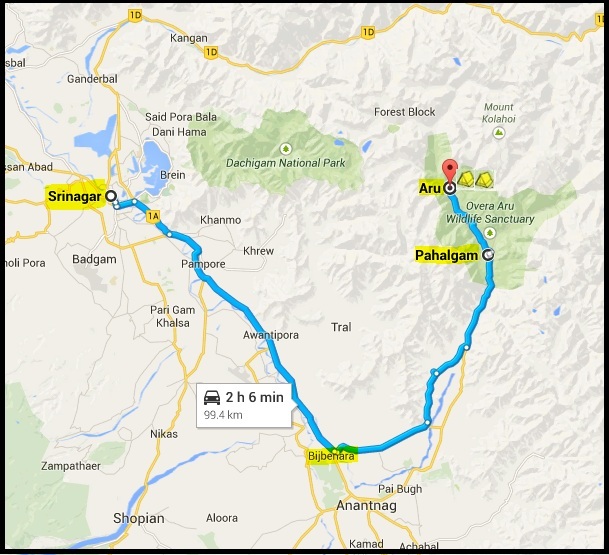
We will organise pick-up vehicles from Srinagar TRC - Tourist Reception Centre at 2:00pm. The cost of transit from Srinagar to Aru will have to be borne by the trekkers. The pickup is arranged in a Tata Sumo (or similar vehicle) The total cost of transportation one way is Rs. 2400 (to be shared among 5-6 people, i.e Rs. approx Rs.500 per head one way) We are expected to reach Aru by 6:00pm
The trek ends at Sumbal. We are expected to reach Sumbal by afternoon. Return transportation from Sumbal to Sringar can be arranged by us. The cost of transport is additional, to be shared among trekkers and paid directly to the driver. The total cost of transportation one way is Rs. 2400 (to be shared among 5-6 people, i.e Rs. approx Rs.500 per head one way) Srinagar is 2 hours away from Sumbal.
Hire an SUV from Srinagar to Pahalgam
An SUV costs about 3500 and can take about 5-6 people comfortably.
There are two lovely routes to Phalgaon, one through Anantnag and the other through Bijbera. I would strongly suggest the Bijbehra route. It is of the tourist trails and drives through excellent rural Kashmir scenery. What tops it is the abundance of apple orchards, walnut and apricot trees along the way.
Hire a taxi from the local taxi stand
It will cost you about Rs.600 from Pahalgam to Aru
Map
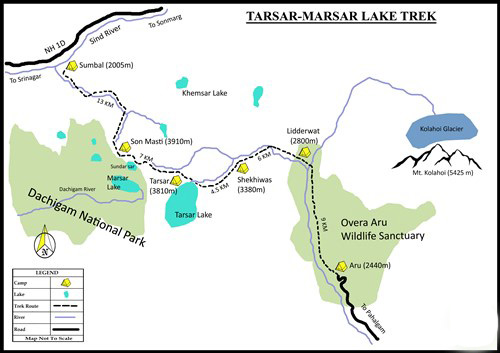
Trek Fee
Tarsar Marsar Trek
Rs 10,500
per person (Includes all costs of the trek from
Aru to Sumbal)
Note: Service tax at 3.63% is payable on the trek fee
Contact Us
Registered Trekkers call:
9469772952
Mon-Fri: 9.30 AM – 7.00 PM
Sat: 9:30 AM – 1:00 PM
write to us at: reservation@Murawah.com
Trek Itinerary
Day 1: Arrive at Srinagar. Depart Srinagar by 2 pm and drive to Aru base camp
Day 2: Aru to Lidderwat
Day 3: Lidderwat to Shekwas
Day 4: Shekwas to Tarsar and explore Tarsar
Day 5: Tarsar to Sundarsar
Day 6: Sundarsar to Marsar and back and then Sonmasti
Day 7: Sonmasti to Sumbal. Drive to Srinagar and reach by 5 pm.
Trek Info
| Difficulty | Moderate.The trek is long with several steep ascents and descents. Generally snow free. |
| Trail Type | A cross over trail through meadows and passes. |
| Road head | Aru near Pahalgam in Jammu and Kashmir. Srinagar is the nearest airport. |
| Base Camp | Aru |
| Best Season | July to end of September. It is a meadow trek hence best done with the grass is green and flowers are in bloom. |
